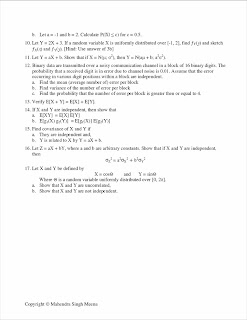COMMUNICATION SYSTEMS
Course Code: BTE 402 Credit Units: 04
Course Objective:
The purpose of this course is to provide a thorough introduction to analog and digital communications with an in depth study of various modulation techniques, Random processes are discussed, and information theory is introduced.
Course Contents:
Module I: Introduction
Communication Process, Source of Information, base-band and pass-band signals, Review of Fourier transforms, Random variables, different types of PDF, need of modulation process, analog versus digital communications
Module II: Amplitude Modulation
Amplitude modulation with full carrier, suppressed carrier systems, single side band transmission, switching modulators, synchronous detection, envelope detection, effect of frequency and phase errors in synchronous detection, comparison of various AM systems, vestigial side band transmission.
Module III: Angle Modulation
Narrow and wide band FM, BW calculations using Carson rule, Direct & Indirect FM generations, phase modulation, Demodulation of FM signals, noise reduction using pre & de-emphasis.
Module IV: Pulse Modulation
Pulse amplitude, width & position modulation, generation & detection of PAM, PWM & PPM, Comparison of frequency division and time division multiplexed systems.
Basics of Digital Communications: ASK, PSK, FSK, QPSK basics & waveform with brief mathematical introduction
Module V: Noise
Different types of noise, noise calculations, equivalent noise band width, noise figures, effective noise temperature, noise figure.
Module VI: Introduction to Information Theory
Measurement of Information, mutual, Shannon’s theorem, Source coding, channel coding and channel capacity theorem, Huffman code
Text & References:
· B. P. Lathi: “Modern analog & digital communication”, OXFORD Publications
· Wayne Tomasi: ”Electronic Communication systems”, Pearson Education, 5th edition
· Simon Haykin, “Communication Systems”, John Wiley & Sons, 1999, Third Edition.
· Taub and schilling, “Principles of Communication Systems” TMH








